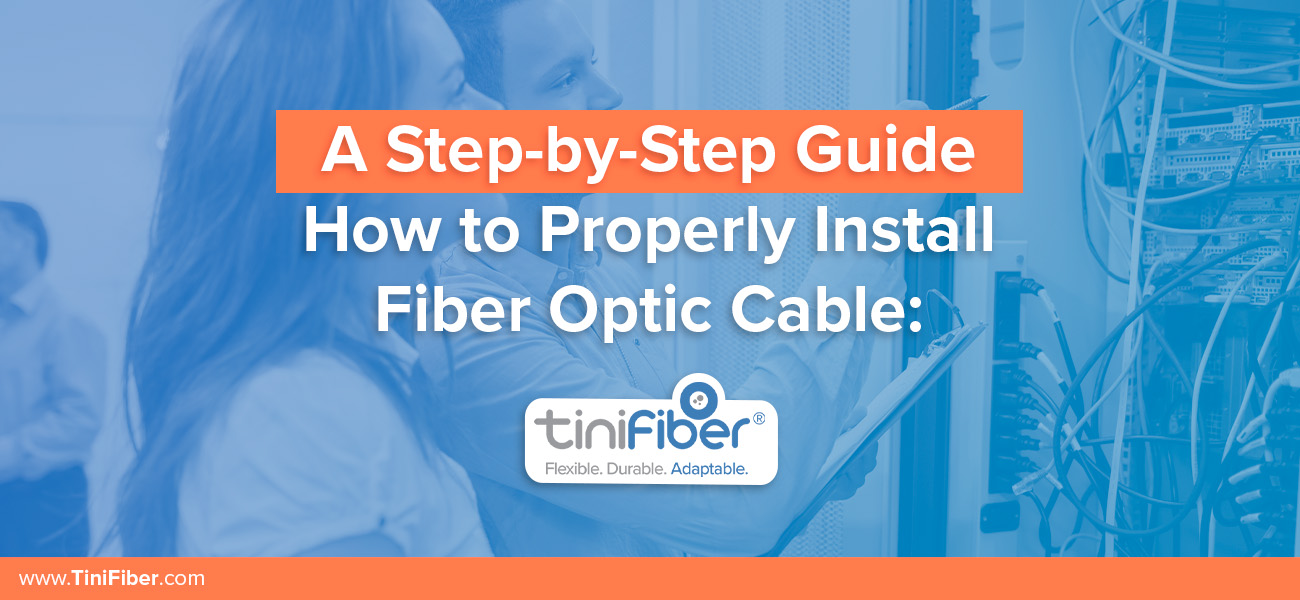Fiber optic cable installation necessitates a high level of skill and attention to detail. If done incorrectly, it can lead to poor performance and expensive repairs. You can, however, successfully install fiber optic cable for your home or business with the right tools, equipment, and safety precautions.
Here’s a step-by-step guide to installing fiber optic cable:
Collect all of the necessary tools and equipment
Collect all of the necessary tools and equipment. Fiber optic cable, connectors, splicing equipment, a fiber optic cable stripper, a fiber optic cleaver, and a fiber optic microscope are all required. Additional tools, such as a drill, hammer, and cable ties, may be required depending on the specific installation requirements.
Plan the path of your fiber optic cable
Determine the most direct route for the fiber optic cable from its origin to its destination. Consider the length of the cable, any obstacles in the way, and any connectors or splices that may be required.
Get the fiber optic cable ready.
Remove the outer jacket of the fiber optic cable using the fiber optic cable stripper to expose the fibers inside. During this process, take care not to damage the fibers.
Splice the fibers together.
Splicing the fibers together is required when connecting multiple sections of fiber optic cable. To accomplish this, use the fiber optic cleaver to carefully cut the fibers to the correct length before joining them together with the splicing equipment.
Connect the fibers to their respective connectors
Using the fiber optic microscope, carefully align and secure the fibers with the connectors. Always follow the manufacturer’s instructions for the connectors you’re using.
Organization
Once the fibers have been connected and spliced, use cable ties or other methods to protect and organize them. This will help to protect the fibers and ensure peak performance.
Examine the connection
After installing the fiber optic cable, test the connection to ensure it is operational. To ensure that the signal is strong and stable, use a fiber optic tester.
Precautions for Safety:
- Handle fiber optic cable and connectors with care. The fibers inside the cable are extremely delicate and easily damaged if handled incorrectly.
- When installing fiber optic cable, use appropriate personal protective equipment (PPE). Gloves, safety glasses, and other protective equipment may be included.
- When installing fiber optic cable, make sure to follow all local building codes and regulations. This could include obtaining permits and adhering to strict installation guidelines.
Recommended Practices:
- Plan your installation carefully to reduce the number of splices and connectors required. Each splice or connector has the potential to introduce signal loss, lowering the overall performance of the fiber optic connection.
- High-quality fiber optic cable and connectors should be used. Cheap, low-quality materials can lead to poor performance and potentially costly future repairs.
- After installation, thoroughly test the fiber optic connection to ensure that it is operational. This will assist you in identifying any issues early on and preventing future problems.
By following these steps and taking the necessary precautions, you can successfully install fiber optic cable for your home or business in no time.
Purchase Your Cables With Tinifiber
Now that you’ve grasped some of the fundamentals of armored fiber cable installation, you’re ready to get started. Using the cable installation recommendations in this article will help you avoid costly blunders that will slow down the installation procedure.
Contact TiniFiber’s cable experts if you require high-strength armored fiber cables for your house or company.

